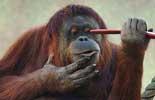China
Tibetologist: 14th Dalai Lama political figure bent on "Tibet independence"
Source: Xinhua | 05-04-2008 07:57
Special Report: The Dalai LamaSpecial Report: Separatists doomed to fail
NEW YORK, May 2 (Xinhua) -- The 14th Dalai Lama, described as a "spiritual leader" by some Western media outlets, is actually a political figure who has never given up "Tibet independence," a Tibetologist said here Friday.
"Painting him as a 'spiritual leader' is totally misleading," said Renzhen Luose, an ethnic Tibetan native of Yajiang County, Ganzi Tibetan Autonomous Prefecture in Sichuan Province who once served as director of the province's Institute of Tibetan Studies.
The "Tibet Government-in-exile" amended its so-called draft "constitution" of 1963 in 1991, expressly stated Tibet as an "independent nation" where all matters must be approved by the Dalai Lama before they become effective, and on the Dalai Lama's official website, a so-called "draft for future political system" provides plans for "political construction" and "establishing ties with the United Nations," said the Tibetologist.
All these prove that the 14th Dalai Lama's claim that he had never sought independence is a total lie, said the Tibetologist.
In his autobiography, the 14th Dalai Lama himself has also described his role as mainly secular, as the leader of the "Tibet government-in-exile," Renzhen Luose said, adding that describing the 14th Dalai Lama only as a "spiritual leader," as has been the case with many Western media outlets, is mistaken and does not accord with reality.
Renzhen Luose, who is a consul at the Chinese Consulate-General in New York, also discussed the relationship between Tibetan Buddhism and Tibetan culture and whether the Dalai Lama is the only leader of Tibetan Buddhism during a two-hour meeting with reporters from New York-based Chinese-language media organizations.
He said Tibetan Buddhism has four major sects -- Gelug, Sakya, Kagyu and Nyingma -- and many sub-sects, and in the past, their influence changed as the Chinese central government's support differed.
In the late Qing Dynasty, Renzhen Luose said, the sect of Gelug, where the Dalai Lama and the Panchen Lama were institutionalized, achieved dominance with the support of the central government and established a theocracy that integrates religion with government.
During that period, despite efforts by the Gelug sect to crack down on other sects, the Dalai Lama had never had unified leadership over Tibetan Buddhism, the Tibetologist added.
Renzhen Luose said he has maintained contact with fellow Tibetan Chinese all along, visited nearly all areas with Tibetan communities and worked at different levels of grassroots governments. Long being a scholar of Tibetan history and culture, Renzhen Luose has published dozens of research papers on Tibetans' ethnic origins and on the origin and evolution of the Tibet question.
"Having myself experienced and witnessed the changes in Tibet and other areas with Tibetan community, I believe I am more qualified than the Dalai Lama to comment on the current situation in Tibet," he said.
Editor:Zhang Ning



